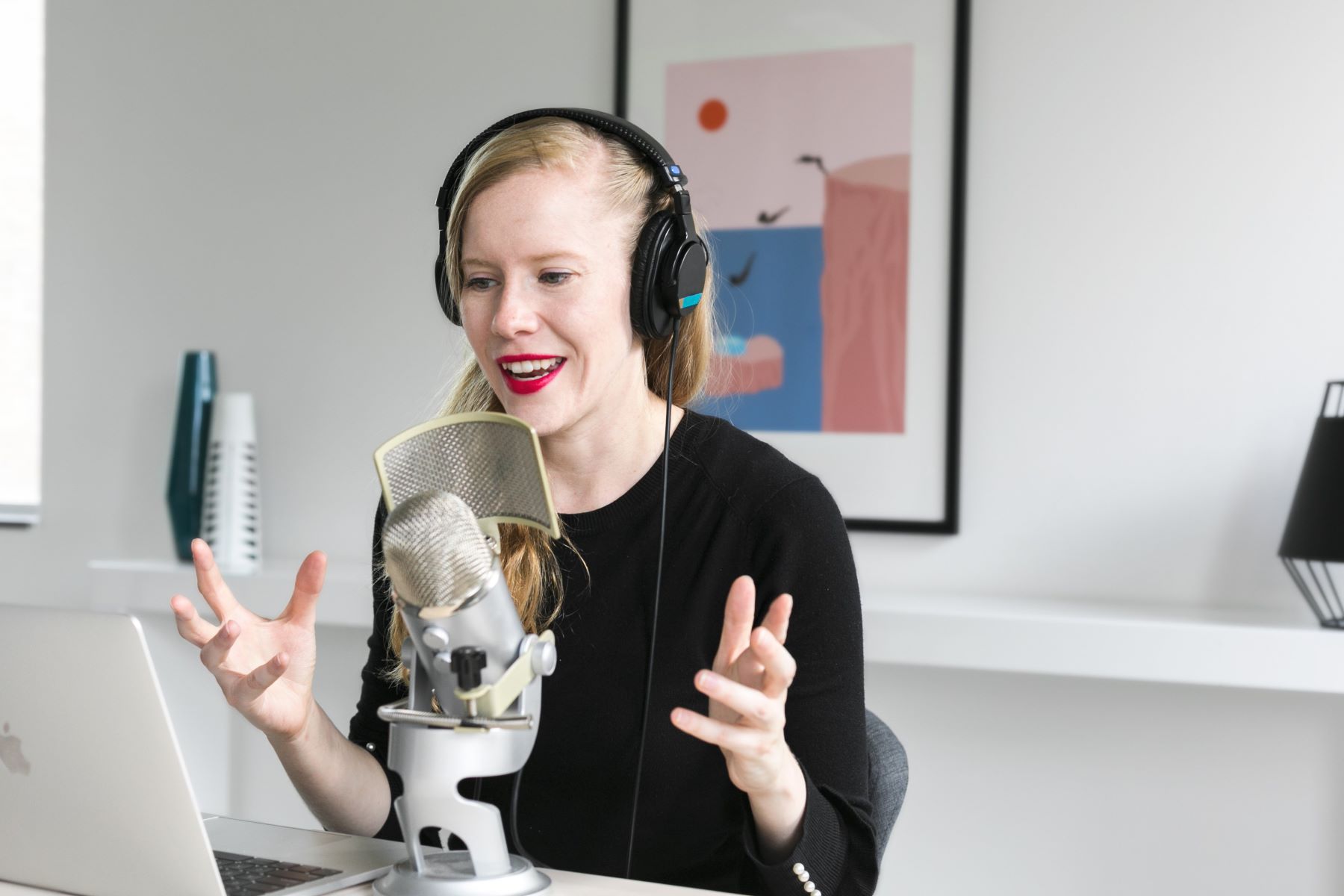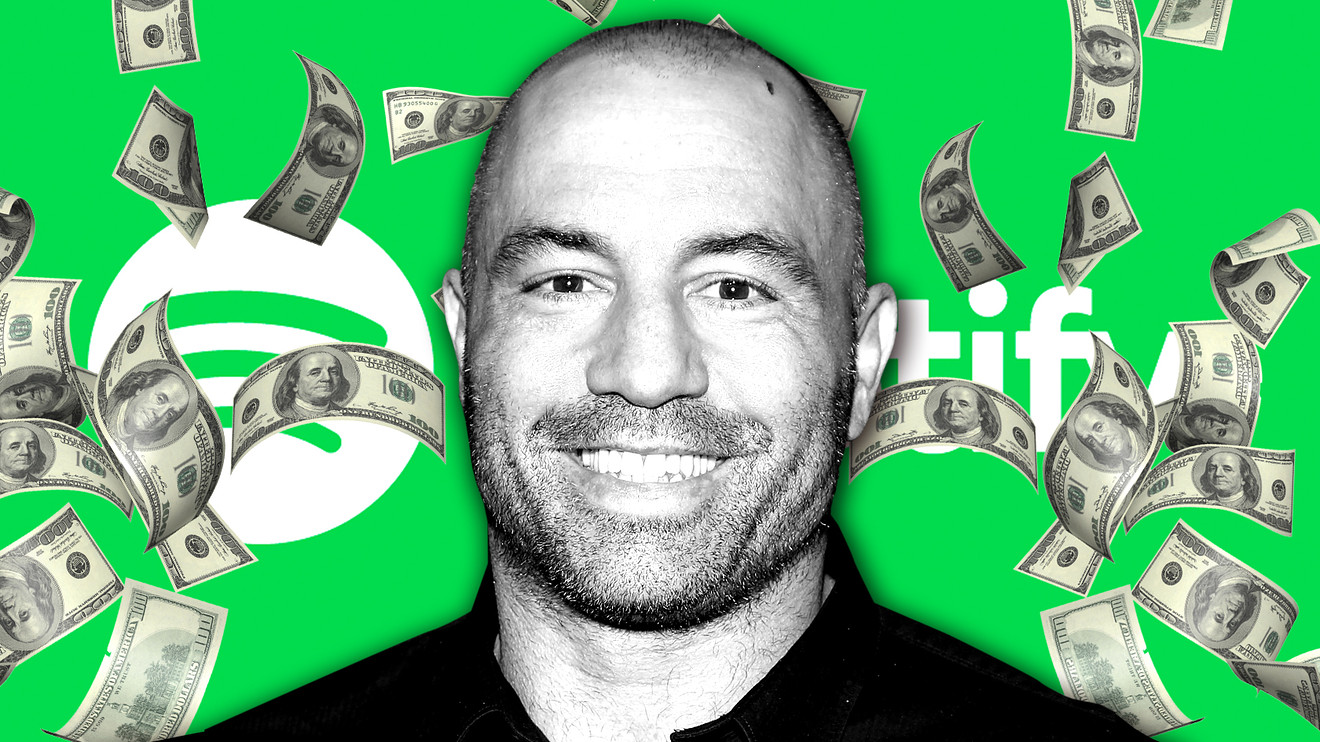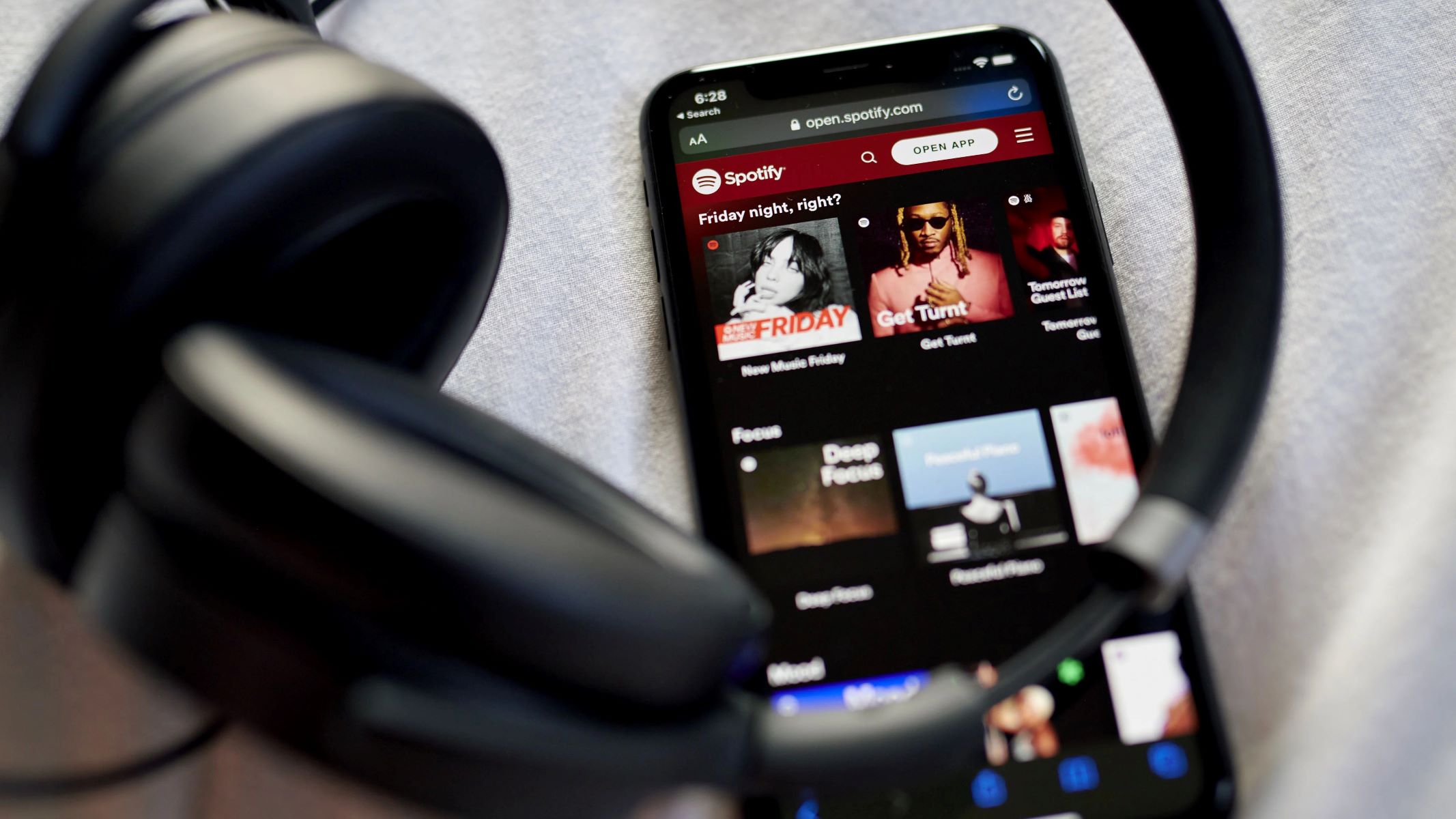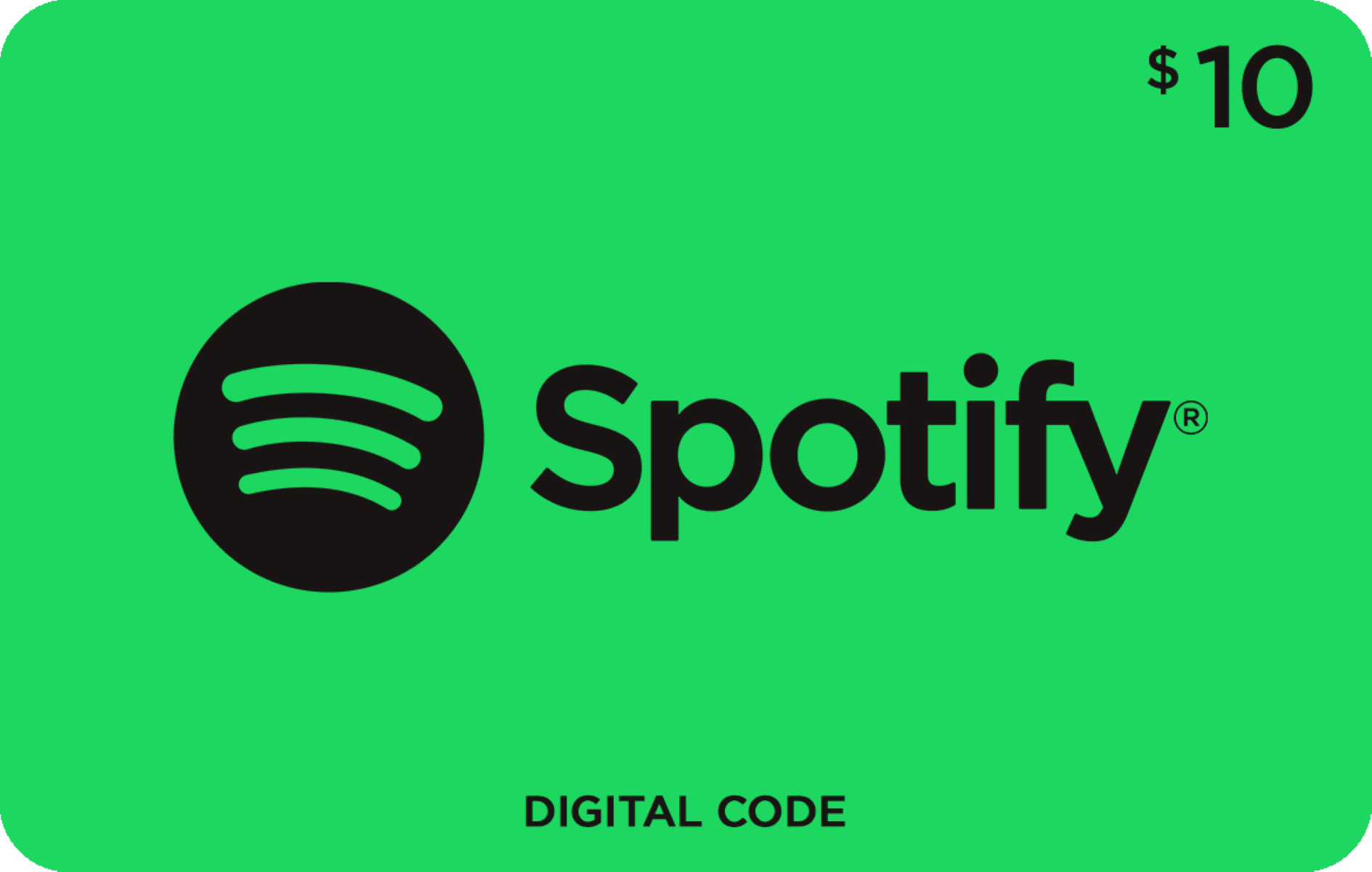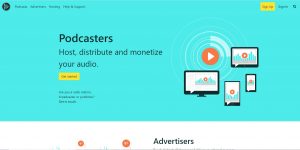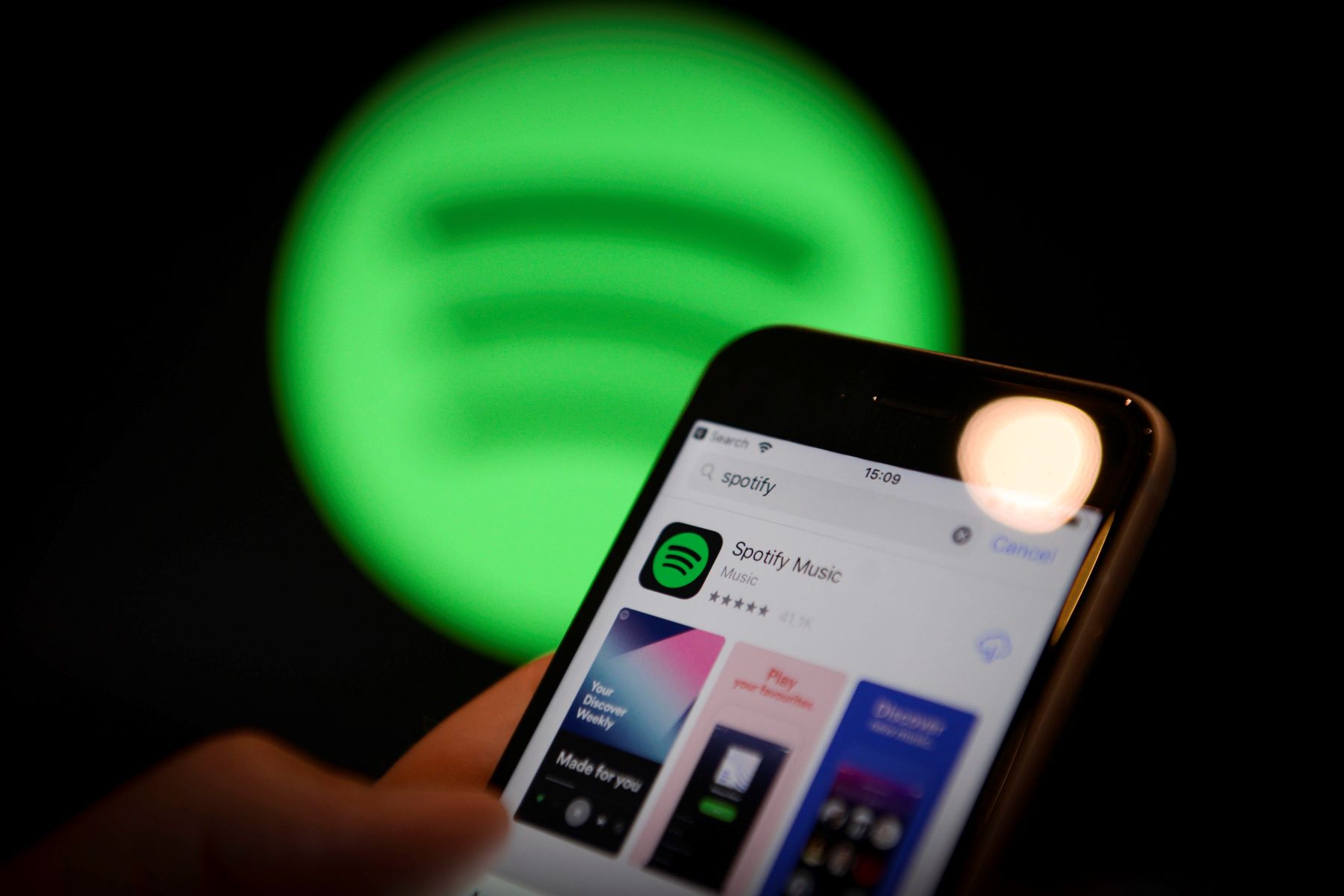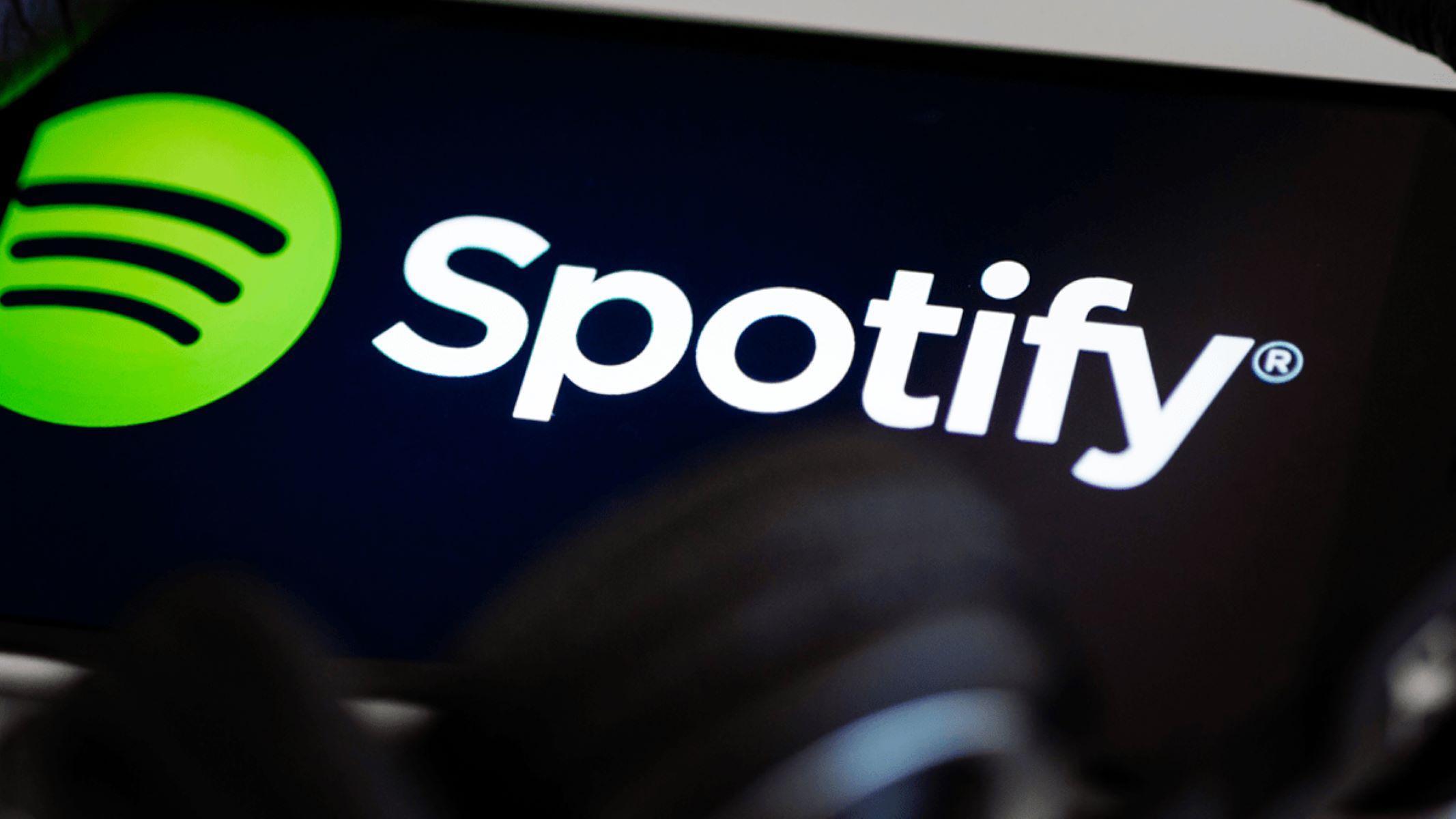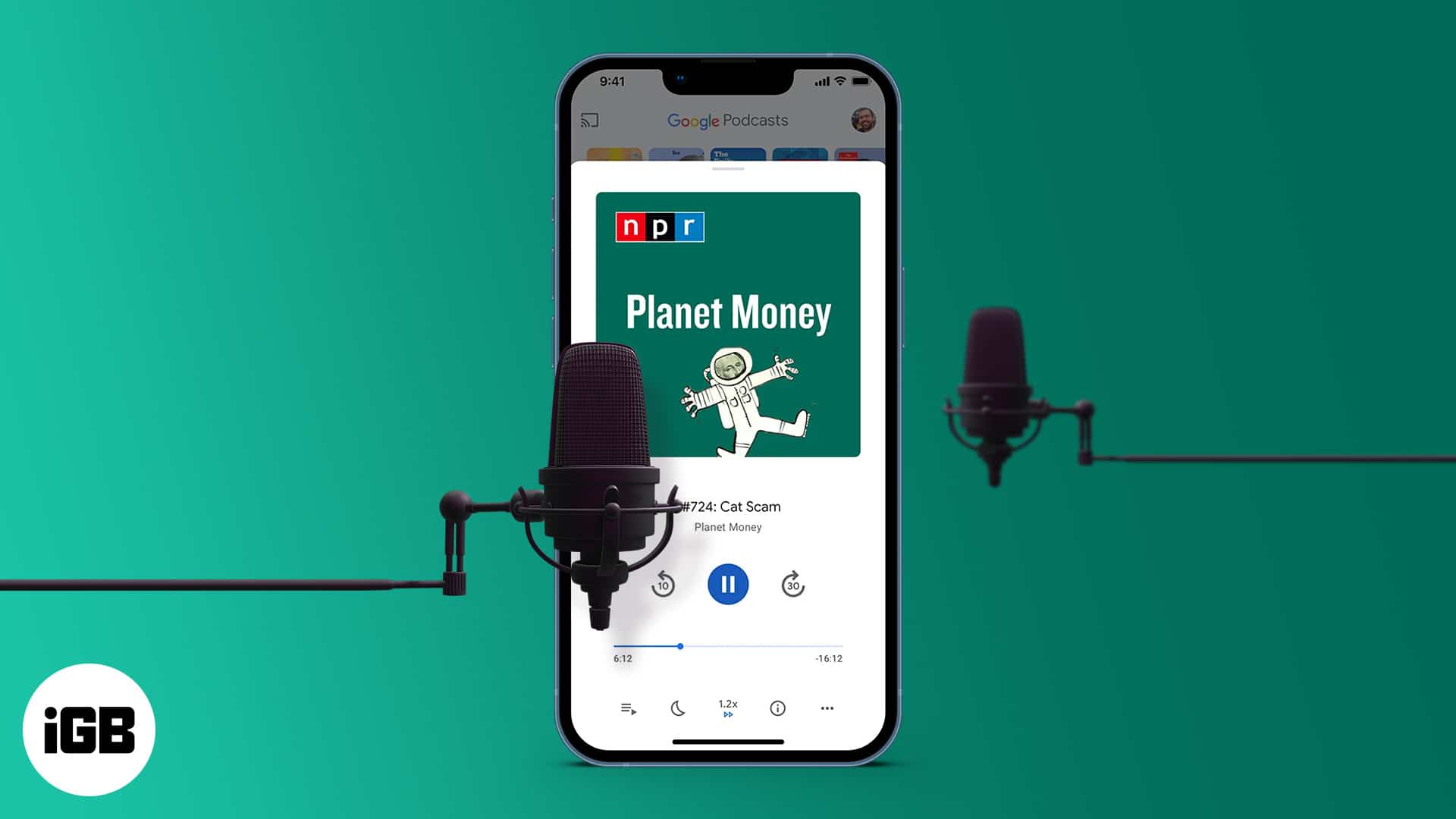Introduction
Welcome to the world of podcasting, where not only can you share your knowledge, insights, and stories, but also make money while doing it. With the rise of platforms like Spotify, podcasting has become an incredibly popular and lucrative medium for content creators. Whether you’re a seasoned podcaster or just starting out, this guide will show you how to make money from your podcast on Spotify.
Podcasting offers a unique opportunity to connect with a global audience and build a loyal community around your content. By providing valuable information, entertaining discussions, or compelling storytelling, you can attract an engaged audience that eagerly awaits your new episodes. However, creating and sharing great content is just one piece of the puzzle when it comes to monetizing your podcast.
In this guide, we will explore various strategies and techniques to help you generate income from your podcast on Spotify. From finding your niche and defining your target audience to leveraging crowdfunding platforms and collaborating with sponsors, we will cover it all. So, let’s dive in and discover the world of podcast monetization.
Before we begin, it’s important to note that building a successful podcast takes time, effort, and consistency. It’s not a get-rich-quick scheme, but rather a journey that requires dedication and strategic planning. So, if you’re ready to turn your passion for podcasting into a source of income, let’s get started!
Find a Niche and Define Your Target Audience
One of the key ingredients to a successful podcast is finding your niche. A niche is a specific topic or area of interest that sets your podcast apart from others. By focusing on a niche, you can attract a dedicated audience that shares your passion and is more likely to engage with your content.
Start by brainstorming topics that you are knowledgeable and passionate about. Consider your unique perspective, expertise, or experiences that you can bring to the table. This will help you stand out in a crowded podcasting landscape. Remember, the more specific your niche, the easier it will be to target a specific audience.
Once you’ve identified your niche, it’s important to define your target audience. Understanding who your ideal listeners are will allow you to tailor your content to their needs and preferences. Think about their demographics, interests, and pain points. What do they want to learn or be entertained by? What kind of format or style would appeal to them?
Conducting market research can be incredibly helpful at this stage. Look for other podcasts in your niche and analyze their audience and engagement. Use social media platforms to connect with potential listeners and gather feedback. This will provide valuable insights into what your target audience is looking for in a podcast.
By finding a niche and defining your target audience, you will be able to create content that resonates with your listeners and builds a loyal following. Remember, it’s better to have a smaller but highly engaged audience than a large but disengaged one.
Plan and Record Engaging Podcast Episodes
Now that you have found your niche and defined your target audience, it’s time to start planning and recording engaging podcast episodes. The quality of your content plays a crucial role in attracting and retaining listeners.
Begin by brainstorming episode ideas that align with your niche and cater to the interests of your target audience. Consider creating an outline or script for each episode to ensure a well-structured and organized discussion. This will help you stay on track and deliver valuable content.
When recording your episodes, make sure to invest in good quality audio equipment. A high-quality microphone and headphones can significantly improve the overall sound of your podcast. Find a quiet location to minimize background noise and ensure a clear recording.
In terms of format, there are several options to consider. You can host solo episodes where you share your knowledge and insights, conduct interviews with industry experts or interesting individuals, or even have co-hosts to add diversity and dynamics to your podcast. Experiment with different formats to see what works best for your content and engagement.
While it’s important to have a plan, don’t be afraid to let the conversation flow naturally. Authenticity and spontaneity can make your podcast more relatable and engaging for listeners. Encourage discussions and interactions with your audience through social media or email to foster a sense of community.
Remember, consistency is key. Set a regular schedule for releasing episodes and stick to it. This will help you build anticipation and trust with your audience. Additionally, consider the length of your episodes. Aim for a duration that allows for in-depth discussions without overwhelming your listeners.
Lastly, editing your podcast episodes is crucial to deliver a polished final product. Remove any background noise, awkward pauses, or irrelevant content. There are many free and paid editing software options available that can help you refine your episodes.
By planning and recording engaging podcast episodes, you can captivate your audience and keep them coming back for more. Offer valuable insights, thought-provoking discussions, and entertaining content that will leave your listeners eagerly anticipating your next episode.
Create a Captivating Podcast Title and Description
When it comes to making money from your podcast on Spotify, grabbing your audience’s attention starts with a captivating podcast title and description. Your title and description act as the first impression, enticing potential listeners to click and discover your content.
When crafting your podcast title, make it clear, concise, and memorable. It should give listeners a glimpse into what your podcast is about while piquing their curiosity. Incorporate keywords relevant to your niche to improve search visibility. Consider using catchy phrases, puns, or intriguing questions to make your title stand out among other podcasts.
Your podcast description is an opportunity to provide more details about your show. Use this space to summarize the key topics or themes you cover and showcase the unique value your podcast offers. Highlight any notable guests, special segments, or awards that may attract listener interest. Write in a conversational and engaging tone to draw readers in and make them eager to hit that “subscribe” button.
When writing your podcast description, keep in mind that Spotify limits the character count. So, focus on the most important information and make it concise yet compelling. Be sure to include keywords related to your content to improve discoverability through search engines.
Another crucial aspect is your podcast cover art. This visual representation is what potential listeners see first, so make sure it is eye-catching and aligned with the theme and tone of your show. Hire a professional designer or use online tools to create high-quality cover art that reflects your podcast’s personality.
Additionally, consider including a trailer episode where you provide a preview of your podcast’s content. This can serve as a powerful promotional tool to entice listeners to subscribe and listen to future episodes.
Remember, your podcast title, description, and cover art should work together harmoniously to create a strong brand identity. They are the gateway to attracting and engaging your target audience, so invest time and effort into making them compelling and visually appealing.
Optimize Your Show for Spotify Search
As one of the largest podcast platforms, optimizing your show for Spotify search is essential for increasing visibility and attracting new listeners. By following a few best practices, you can ensure that your podcast ranks higher in search results and reaches your target audience.
First, conduct keyword research to identify relevant and popular terms within your niche. These keywords should be incorporated strategically in your podcast title, description, and episode titles. This will improve your chances of appearing in search results when users search for related topics.
When creating your podcast title and description, consider using descriptive keywords that clearly convey what your show is about. Avoid generic titles and vague descriptions that don’t provide enough information about your content. Be specific and concise, and use your keywords naturally to increase visibility.
Additionally, take advantage of Spotify’s tagging feature. Tags act as additional keywords and can help your podcast show up in specialized searches. Choose tags that accurately represent the topics and themes covered in your episodes.
Another way to optimize your podcast for search is by providing high-quality show notes for each episode. These show notes should provide a brief summary of the episode content and include relevant keywords. Remember to include timestamps for key discussion points within the episode, as Spotify allows users to jump directly to specific sections of an episode.
It’s also crucial to encourage your listeners to engage with your podcast on Spotify. Ask them to follow, like, and share your show. The more engagement your podcast receives, the higher it will rank in Spotify’s algorithm, leading to increased visibility and organic growth.
Lastly, utilize social media as a promotional tool for your podcast. Share links to your Spotify episodes on your social media platforms, and encourage your followers to listen, subscribe, and share. This not only drives traffic to your podcast but also signals to Spotify that your content is popular and valuable.
By optimizing your show for Spotify search, you can increase the discoverability of your podcast and attract a larger audience. Implementing these strategies will help you rank higher in search results, making it easier for users interested in your niche to find and listen to your content.
Promote Your Podcast to Gain Subscribers
Creating great content is just one part of the equation when it comes to making money from your podcast on Spotify. To maximize your earning potential, you need to actively promote your podcast and grow your subscriber base. Here are some effective strategies for promoting your podcast:
1. Utilize Social Media: Leverage the power of social media platforms such as Facebook, Twitter, Instagram, and LinkedIn to promote your podcast episodes. Create engaging posts, share episode highlights, and include direct links to your Spotify podcast page. Engage with your followers, respond to comments, and encourage them to share your content.
2. Cross-Promotion: Collaborate with other podcasters in your niche to cross-promote each other’s shows. You can invite them as guests on your podcast or participate in joint episodes. This not only exposes your podcast to a new audience but also establishes you as an authoritative figure within your niche.
3. Guest Appearances: Pitch yourself as a guest on other podcasts that align with your niche. This allows you to reach a new audience that may be interested in your content. Make sure to mention your podcast during the episode and provide links to your show in the show notes or description.
4. Engage with Your Audience: Encourage your current listeners to spread the word about your podcast by providing them with valuable content and incentives. Ask for reviews and ratings on Spotify, as these can greatly increase your podcast’s visibility. Respond to comments and messages, build relationships with your audience, and create a sense of community around your show.
5. Network with Influencers: Reach out to influencers and industry experts in your niche and offer to feature them on your podcast. Once the episode is live, they may promote it to their own followers, giving your podcast exposure to a wider audience.
6. Online Communities and Forums: Participate in online communities and forums that are relevant to your podcast topic. Share your expertise, answer questions, and provide valuable insights. Include a link to your podcast in your profile or signature, and engage in discussions that allow you to naturally promote your show.
Remember, consistency is key. Release new episodes on a consistent schedule to keep your subscribers engaged and coming back for more. Promote each new episode across your promotional channels to maximize its reach and impact.
By implementing these promotion strategies, you can increase the visibility of your podcast and gain a larger subscriber base. Don’t underestimate the power of active promotion in growing your podcast’s audience and revenue potential.
Monetize Your Podcast with Advertisements
One of the most common and effective ways to monetize your podcast on Spotify is through advertisements. By partnering with brands and incorporating sponsored content into your episodes, you can generate a steady stream of revenue. Here are some steps to successfully monetize your podcast with advertisements:
1. Build a Strong Audience: Advertisers are more likely to work with podcasts that have a sizable and engaged audience. Focus on creating high-quality content consistently and engaging with your listeners to grow your subscriber base.
2. Define Your Target Audience: Understand your listeners and their demographics, interests, and motivations. This will help you attract relevant advertisers who align with your audience’s interests.
3. Research Ad Networks and Agencies: Look for reputable ad networks and agencies that specialize in podcast advertising. They can help connect you with potential advertisers and manage the monetization process.
4. Incorporate Native Advertising: Native advertising refers to seamlessly integrating advertisements into your episodes. This can be done through short sponsor mentions, pre-roll or mid-roll ads, or even dedicated sponsorship segments. Make sure to clearly disclose the sponsored content to maintain transparency with your audience.
5. Directly Reach Out to Potential Sponsors: Take the initiative to approach brands or companies that align with your podcast’s niche. Craft a compelling pitch that highlights the unique value you can provide to their target audience. Offer various sponsorship opportunities, such as episode mentions, sponsored episodes, or exclusive discounts for your listeners.
6. Provide Value to Advertisers: Understand the goals and objectives of your potential sponsors. Tailor your proposals and advertisement placements to align with their objectives. Demonstrate the benefits of advertising on your podcast, such as audience engagement, brand awareness, and consumer loyalty.
7. Track and Analyze Performance: Utilize tracking tools and analytics to measure the effectiveness of your advertisements. Provide reports and key metrics to your advertisers to showcase the value they receive.
8. Offer Multiple Advertising Options: In addition to direct sponsorships, consider joining ad networks or affiliate marketing programs. These platforms connect podcasters with a wide range of advertisers and make the monetization process more streamlined.
Remember, maintaining the trust and loyalty of your audience is crucial. Choose sponsors and advertise products or services that align with your podcast’s values and are relevant to your listeners. Strive for a balance between sponsored content and organic content to avoid overwhelming your audience.
By leveraging advertisements as a monetization strategy, you can generate a consistent income stream from your podcast. However, it’s essential to choose advertisers carefully and prioritize providing value and relevance to your audience’s experience.
Leverage Spotify’s Crowdfunding Feature
In addition to traditional advertising methods, Spotify offers a unique crowdfunding feature that allows podcasters to directly monetize their content through listener contributions. By leveraging this feature, you can engage your audience and provide them with an opportunity to support your podcast financially. Here’s how you can make the most out of Spotify’s crowdfunding feature:
1. Enable Fan Support: Activate Spotify’s crowdfunding feature on your podcast by going to your podcast dashboard and enabling the “Fan Support” option. This will allow your listeners to contribute financially to your podcast through monthly donations.
2. Establish Reward Tiers: Create different reward tiers for your supporters based on their donation level. For example, you can offer exclusive bonus content, early access to episodes, personalized shoutouts, or even merchandise for higher-tier supporters. Make sure the rewards are valuable and appeal to your audience.
3. Engage Your Listeners: Use your podcast episodes to express gratitude to your supporters and encourage new listeners to contribute. Highlight the benefits and perks of becoming a supporter to entice your audience to participate in your crowdfunding campaign.
4. Promote Your Crowdfunding Campaign: Utilize your podcast episodes, social media platforms, and website to promote your crowdfunding campaign. Create visually appealing banners, graphics, and posts that clearly convey the purpose and benefits of supporting your podcast financially. Consider creating a dedicated webpage or landing page with all the relevant information and a convenient way to contribute.
5. Regularly Update and Communicate with Supporters: Keep your supporters informed about the progress of your podcast and the impact of their contributions. Send regular updates through email newsletters or exclusive supporter-only episodes. This not only keeps your supporters engaged but also encourages them to continue their contributions.
6. Express Gratitude: Show your appreciation to your supporters through personalized thank-you messages, on-air acknowledgments, or special episodes dedicated to recognizing their contributions. Make them feel valued and part of an exclusive community.
7. Collaborate with Other Podcasters: Cross-promote crowdfunding campaigns with other podcasters in your niche. By supporting each other and encouraging your respective audiences to contribute, you can collectively boost your crowdfunding efforts.
Remember, transparency about how the funds will be used is crucial. Clearly communicate to your audience how their contributions will support the growth and development of your podcast, whether it’s investing in better equipment, professional editing, or special guest appearances.
By leveraging Spotify’s crowdfunding feature, you can tap into the support and generosity of your listeners to financially sustain and grow your podcast. Make the process engaging, rewarding, and mutually beneficial, and you’ll be on your way to a thriving crowdfunding campaign.
Collaborate with Brands and Sponsors for Paid Content
Collaborating with brands and sponsors is a lucrative way to monetize your podcast on Spotify. By creating paid content or integrating sponsorships into your episodes, you can generate a steady stream of income while maintaining the trust and interest of your audience. Here’s how you can effectively collaborate with brands and sponsors:
1. Identify Relevant Brands: Research brands that align with your podcast’s niche and target audience. Look for brands that share similar values and have products or services that would benefit your listeners. Approach brands that resonate with your content and have a clear connection to your podcast’s theme.
2. Craft a Compelling Pitch: Create a professional and personalized pitch that showcases the value and reach of your podcast. Highlight your audience demographics, engagement, and any notable achievements or milestones. Clearly outline what you can offer to the brand in terms of exposure and brand alignment.
3. Develop Sponsorship Packages: Design different sponsorship packages that cater to the needs and budgets of various brands. Offer different levels of exposure such as pre-roll, mid-roll, or post-roll advertisements, sponsored episodes, or mentions during your podcast. Include the benefits and reach for each package to provide clear value propositions to potential sponsors.
4. Maintain Transparency: Transparency is key when incorporating paid content. Clearly disclose any sponsored segments or advertisements to your audience. This ensures that your listeners know when you are promoting sponsored products or services, maintaining their trust in your recommendations.
5. Create Engaging Sponsored Content: Integrate sponsored content seamlessly within your episodes. Craft engaging and informative advertisements that align with your podcast’s style and tone. Personalize the advertisements by relating them to your own experiences or sharing how the product or service can benefit your listeners.
6. Track and Report Results: Provide sponsors with regular reports and analytics showcasing the results of their sponsorship. This includes metrics such as listener engagement, click-through rates, and conversions. Clear and measurable results will reinforce the value of their investment and encourage ongoing partnerships.
7. Long-Term Partnerships: Nurture long-term relationships with brands and sponsors by delivering exceptional value and maintaining open communication. Partnering with brands that align with your podcast’s values and vision can lead to ongoing collaborations and a consistent revenue stream.
Remember, it’s important to strike a balance between sponsored content and organic content to maintain your audience’s interest. Be selective about the brands you collaborate with and ensure that their products or services align with your podcast’s niche and audience’s interests.
By collaborating with brands and sponsors, you can monetize your podcast while providing valuable content to your audience. Approach potential sponsors with a personalized pitch, create engaging sponsored content, and foster long-term partnerships to maximize your revenue potential.
Sell Merchandise or Products Related to Your Podcast
Selling merchandise or products related to your podcast is a fantastic way to not only monetize your podcast on Spotify but also offer your audience a tangible way to support and engage with your show. By creating and selling merchandise, you can build a stronger connection with your fans and generate additional income. Here’s how you can successfully sell merchandise and products related to your podcast:
1. Create Unique and Relevant Designs: Develop merchandise that reflects the theme, style, and personality of your podcast. Consider designing custom artwork, logos, or slogans that resonate with your audience. Make sure the designs are visually appealing and relatable to your podcast’s content.
2. Offer a Variety of Products: Provide a range of merchandise options to cater to different preferences and budgets. This can include t-shirts, hoodies, hats, tote bags, stickers, mugs, or any other items that your audience would enjoy. Consider conducting surveys or engaging with your audience to determine what types of merchandise they would be interested in.
3. Set Up an Online Store: Create an online store or integrate an e-commerce plugin on your website to showcase and sell your merchandise. Optimize the store’s design and layout to provide a seamless and user-friendly shopping experience.
4. Promote Your Merchandise: Utilize your podcast episodes, social media platforms, and website to promote your merchandise. Capture compelling photos or videos of your merchandise and share them with engaging captions or stories. Consider offering exclusive promotions or discounts to incentivize your audience to make a purchase.
5. Engage with Your Fans: Interact and engage with your audience to foster a sense of community and encourage merchandise sales. Encourage listeners to share photos of themselves with your merchandise and feature those photos on your social media platforms or website. Consider including personalized notes or gifts with each merchandise shipment to show your appreciation.
6. Collaborate with Other Podcasters or Influencers: Partner with other podcasters or influencers in your niche to promote each other’s merchandise. This collaboration can expose your merchandise to a larger audience, increasing the chances of generating sales.
7. Limited Edition or Special Merchandise: Create a sense of urgency and exclusivity by offering limited edition merchandise or special collaborations. This can create a buzz among your audience, driving up demand and increasing sales.
8. Monitor Inventory and Fulfillment: Regularly monitor your merchandise inventory to ensure availability and prevent overselling. Choose a reliable fulfillment process that ensures timely and accurate shipping of orders.
Remember to prioritize quality when creating and sourcing your merchandise. Ensuring that your products are of high quality will not only delight your fans but also enhance your podcast’s brand perception.
By selling merchandise or products related to your podcast, you can generate additional revenue and strengthen the relationship with your audience. Offer unique and relevant designs, promote your merchandise effectively, and engage with your fans to create a successful merchandise sales strategy.
Use Affiliate Marketing to Generate Income
Affiliate marketing is an effective way to generate income from your podcast on Spotify by promoting products or services from brands that align with your podcast’s niche. By becoming an affiliate marketer, you can earn commissions for every sale or referral you generate through your unique affiliate links. Here’s how you can effectively use affiliate marketing to monetize your podcast:
1. Research and Choose Affiliate Programs: Identify affiliate programs that offer products or services relevant to your podcast’s audience. Look for reputable affiliate networks or individual brands that have a track record of fair commissions, quality products, and reliable tracking and payment systems.
2. Promote Products You Believe In: Select products or services that you genuinely believe in and that align with your podcast’s values and niche. Your audience’s trust is paramount, so ensure that you only promote products that you would personally use or recommend.
3. Incorporate Affiliate Links Into Your Show Notes: Include affiliate links in the show notes or podcast description for each episode. Make sure to disclose that these are affiliate links to maintain transparency with your audience. Consider providing additional context or recommendations to encourage listeners to click on the links.
4. Review and Recommend Products: Create dedicated episodes or segments where you review and recommend affiliate products or services. Share your personal experiences, highlight the benefits, and explain how they can solve your audience’s pain points. Authentic and honest recommendations can greatly impact your listeners’ purchasing decisions.
5. Create Sponsored Content: Collaborate with brands as part of your affiliate marketing strategy. Craft sponsored episodes or segments where you discuss and promote the brand’s products or services. Ensure that the sponsored content is valuable and fits seamlessly into your podcast’s format.
6. Leverage Your Online Presence: Utilize your podcast’s website, blog, and social media platforms to promote your affiliate links. Write informative blog posts or share engaging social media content that features the affiliate products. Incorporate the affiliate links naturally within your content.
7. Track and Analyze Performance: Use tracking tools and analytics provided by the affiliate programs to measure the performance of your affiliate marketing efforts. Identify which products or strategies are generating the most conversions and adjust your approach accordingly.
8. Regularly Update and Refresh Affiliate Promotions: Stay updated with the latest products, promotions, and campaigns from your affiliate partners. Remove outdated or inactive affiliate links and replace them with fresh and relevant ones. Keep your audience informed about new offerings through podcast episodes or social media announcements.
Remember, building trust with your audience is crucial for successful affiliate marketing. Be transparent about your affiliate relationships and always prioritize the best interest of your listeners when recommending products or services.
By utilizing affiliate marketing effectively, you can generate a passive income stream from your podcast on Spotify. Choose relevant affiliate programs, promote products you believe in, and provide valuable recommendations to your audience to maximize your affiliate marketing potential.
Offer Exclusive Bonus Content or Premium Subscriptions
Offering exclusive bonus content or premium subscriptions is a strategic way to monetize your podcast on Spotify. By providing additional value to your most loyal listeners, you can generate income while fostering a stronger connection with your audience. Here’s how you can effectively offer exclusive bonus content or premium subscriptions:
1. Identify Valuable Bonus Content: Determine what kind of bonus content would be appealing to your audience. This can include extended interviews, behind-the-scenes footage, exclusive episodes, expert Q&A sessions, or access to a private community. Consider conducting surveys or engaging with your audience to understand their preferences.
2. Create a Premium Subscription Model: Establish a premium subscription model that provides access to exclusive content. This can be offered on a monthly or annual basis. Ensure that the subscription pricing aligns with the value of the exclusive content you are providing.
3. Promote the Benefits: Clearly communicate the benefits of subscribing to your premium content. Highlight the value and unique experiences your subscribers will receive. Share samples or snippets of the exclusive content to entice your audience to subscribe.
4. Offer a Freemium Model: Consider offering a freemium model where you provide a select amount of exclusive bonus content for free, while reserving the most valuable and in-depth content for premium subscribers. This can help attract new listeners and entice them to upgrade to a premium membership for full access.
5. Provide Regular and Consistent Exclusive Content: Engage with your premium subscribers by consistently delivering valuable exclusive content. Whether it’s releasing exclusive episodes on a set schedule or providing exclusive access to live events or webinars, make sure that your premium subscribers feel that they are receiving ongoing value for their subscription.
6. Create a Sense of Community: Establish a private community or platform where your premium subscribers can connect and engage with each other. This can be a forum, Discord channel, Slack group, or a dedicated social media community. Encourage discussions, provide personalized feedback, and make your premium subscribers feel like a part of an exclusive community.
7. Offer Special Discounts or Perks: Reward your premium subscribers with special discounts on merchandise, live events, or other products related to your podcast. Exclusive perks can further incentivize your audience to become premium subscribers and enhance their overall experience.
8. Engage with Premium Subscribers: Interact and communicate with your premium subscribers on a regular basis. Respond to their feedback, address their questions, and demonstrate that their support is valued. Consider hosting live Q&A sessions or AMA (Ask Me Anything) episodes specifically for your premium subscribers.
Remember, consistency and quality are key. Continuously provide valuable and engaging exclusive content to justify the subscription cost and retain your premium subscribers.
By offering exclusive bonus content or premium subscriptions, you can monetize your podcast on Spotify while strengthening the relationship with your most dedicated audience members. Focus on providing unique and valuable experiences that set your premium content apart from what is freely available to non-subscribers.
Connect with Your Audience Through Patreon or Ko-fi
One effective way to connect with your audience and monetize your podcast on Spotify is through the use of platforms like Patreon or Ko-fi. These platforms provide a direct channel for your listeners to support your podcast financially and engage with you on a deeper level. Here’s how you can make the most of Patreon or Ko-fi:
1. Create a Compelling Profile: Set up a profile on Patreon or Ko-fi that clearly communicates the purpose and value of supporting your podcast. Write a compelling bio that highlights what your podcast is about, the benefits of becoming a patron or supporter, and why their support matters.
2. Offer Different Membership Tiers: Provide various membership tiers on Patreon or Ko-fi that offer different levels of perks and benefits to your supporters. The tiers can include exclusive content, early access to episodes, merchandise discounts, personalized shout-outs, or even one-on-one interactions with you.
3. Engage with Your Patrons or Supporters: Regularly interact with your patrons or supporters through Patreon or Ko-fi. Respond to their comments, questions, and messages. Show appreciation and make them feel like valued members of your podcast community.
4. Provide Exclusive Content: Reward your patrons or supporters with exclusive bonus content that is not available to the general audience. This can include behind-the-scenes videos, bloopers, extended interviews, or access to special events or live streams. Ensure that the exclusive content provides added value to your supporters.
5. Offer Early Ad-Free Episodes: Provide your patrons or supporters with early access to episodes, allowing them to enjoy your content before it’s released to the public. Consider offering ad-free versions of your episodes as an additional perk for higher-tier supporters.
6. Collaborate with your Patrons or Supporters: Foster a sense of community by involving your patrons or supporters in the creation process. Seek their input on episode topics, guest suggestions, or special episodes. Make them feel like valued contributors to your podcast.
7. Cross-Promote on Other Platforms: Utilize your podcast episodes, website, and social media platforms to promote your Patreon or Ko-fi page. Clearly explain the benefits of supporting your podcast and encourage your audience to become patrons or supporters.
8. Show Gratitude: Regularly express gratitude to your patrons or supporters by publicly acknowledging their contributions. Consider dedicating episodes or segments to thank them or feature their names. Sending personalized messages or small tokens of appreciation can also go a long way in building loyalty and maintaining strong connections.
Remember, transparency and accountability are key. Clearly communicate how the funds raised through Patreon or Ko-fi will be used to support your podcast’s growth and development.
By connecting with your audience through Patreon or Ko-fi, you can strengthen the bond with your listeners, receive financial support, and provide exclusive perks and content that keep them engaged and excited about your podcast.
Attend Podcasting Events and Conferences to Network and Get Sponsorships
Attending podcasting events and conferences is a valuable opportunity to network with fellow podcasters, industry professionals, and potential sponsors. These events provide a platform to learn, share experiences, and build relationships that can lead to collaborations and sponsorships. Here’s how you can make the most of podcasting events and conferences:
1. Research and Identify Relevant Events: Look for podcasting events and conferences that align with your podcast’s niche and audience. Research the speakers, topics, and attendees to ensure the event will provide value and networking opportunities that are relevant to your podcast.
2. Prepare Elevator Pitch: Craft a concise and compelling elevator pitch for your podcast. Clearly communicate what sets your podcast apart and highlight its unique value proposition. Practice your pitch to confidently engage with potential sponsors and industry professionals.
3. Network with Fellow Podcasters: Connect with other podcasters at networking sessions, workshops, or social events. Exchange insights, experiences, and industry tips. You may find new collaboration opportunities, cross-promotion options, or even potential guest appearances for your podcast.
4. Engage with Industry Professionals: Attend panel discussions and keynote sessions to learn from industry experts. Take the opportunity to ask questions, seek advice, and showcase your podcast’s potential. Networking with professionals in the podcasting industry can open doors to valuable connections and sponsorship opportunities.
5. Seek Sponsorship Opportunities: Research sponsors or brands attending the event that align with your podcast’s niche. Prepare a compelling sponsorship proposal and schedule meetings or reach out to them during the event. Be prepared to showcase the benefits of sponsoring your podcast, such as audience demographics, engagement, and reach.
6. Attend Workshops and Sessions: Take advantage of workshops and sessions that focus on podcast monetization, sponsorships, and marketing strategies. Gain insights into industry best practices, trends, and successful case studies. Apply this knowledge to refine your podcast’s monetization strategy.
7. Leverage Social Media: Use social media platforms to promote your attendance at the event and connect with other attendees. Share key takeaways, insights, and networking opportunities in real-time. Engage with event hashtags and tag fellow podcasters and industry professionals to expand your reach and visibility.
8. Follow Up and Maintain Connections: After the event, follow up with the contacts you made during networking sessions. Send personalized emails, connect on social media, or schedule follow-up meetings or calls. Cultivate these relationships for potential future collaborations and sponsorship opportunities.
Attending podcasting events and conferences provides a valuable opportunity to learn, network, and secure sponsorships for your podcast. Make the most of these events by being prepared, engaging with industry professionals and fellow podcasters, and maintaining connections long after the event ends.
Analyze Metrics and Adjust Your Strategy as Needed
An important aspect of monetizing your podcast on Spotify is regularly analyzing metrics to track the performance of your content and make informed decisions about your strategy. By understanding your audience, engagement, and revenue metrics, you can optimize your podcast for success. Here’s how you can effectively analyze metrics and make necessary adjustments to your strategy:
1. Listener Metrics: Pay attention to the number of downloads, plays, and subscribers your podcast receives on Spotify. Monitor these metrics over time to identify trends and patterns. Analyze the demographic information provided by Spotify to understand your audience’s geographical location and age range. Use this data to tailor your content and promotional efforts.
2. Engagement Metrics: Examine engagement metrics such as the average listening duration, completion rates, and user interactions such as likes, shares, and comments. Analyze which episodes or topics resonate the most with your audience and generate higher engagement. Adjust your content strategy accordingly to focus on what interests your listeners the most.
3. Conversion Metrics: If you have premium subscriptions, Patreon, Ko-fi, or affiliate marketing, track the conversion metrics to evaluate the effectiveness of your monetization efforts. Measure the number of conversions, average revenue per user, and conversion rates. Identify which strategies or promotional channels yield the highest conversions and optimize your approach based on these insights.
4. Feedback from Listeners: Encourage your listeners to provide feedback via surveys, reviews, or direct messages. Analyze the feedback to gain insights into what your audience enjoys, what they would like to see more of, and any areas for improvement. Use their input to refine your content, delivery style, and overall podcasting strategy.
5. Comparative Analysis: Compare your podcast’s performance to other podcasts in your niche, especially those that are successful in terms of monetization. Identify what sets them apart and how you can learn from their strategies. Analyze their content format, delivery techniques, promotional methods, and revenue streams to gain inspiration.
6. Experimentation and Adaptation: Take calculated risks by experimenting with new formats, topics, or promotional strategies based on your learnings from the metrics analysis. For example, you can try different episode lengths, guest formats, or sponsorships. Measure the impact of these experiments on your metrics and adjust your strategy accordingly.
7. Consistent Monitoring: Continuously track your metrics and regularly review the changes in performance. Monitor trends and patterns over time to identify long-term audience preferences and evolving monetization opportunities. Stay updated with Spotify’s analytics tools and industry benchmarks to stay ahead of the curve.
Remember, metrics analysis is an ongoing process. Regularly review your metrics, adapt your strategy based on insights, and remain flexible to changes in audience preferences and market trends.
By analyzing metrics and adjusting your strategy as needed, you can optimize your podcast’s performance, engagement, and revenue potential on Spotify. Utilize the valuable insights gained from metrics analysis to fine-tune your content, promotion, and monetization efforts for long-term success.
Conclusion
Monetizing your podcast on Spotify requires a strategic approach and a multitude of revenue streams. By implementing the various strategies discussed in this guide, you can unlock the earning potential of your podcast and build a sustainable income. From finding your niche and defining your target audience to utilizing advertising, crowdfunding, and affiliate marketing, there are numerous ways to generate revenue from your podcast.
It’s important to remember that success takes time and dedication. Consistency in delivering high-quality content is key to attracting and retaining a loyal audience. Build engagement with your listeners, foster a sense of community, and actively promote your podcast through social media and networking opportunities.
Analyzing metrics and adjusting your strategy based on insights is crucial for staying ahead in a constantly evolving podcasting landscape. Keep a close eye on listener metrics, engagement rates, and conversion data to optimize your podcast’s performance and revenue generation.
Lastly, always prioritize your audience and their experience. Provide valuable content, be transparent with your monetization strategies, and maintain their trust. The success of your podcast is built on a strong and engaged community of listeners.
So, take the knowledge and strategies from this guide, apply them to your podcast, and embark on your journey to monetization on Spotify. With dedication, creativity, and a commitment to delivering value, you can turn your passion for podcasting into a successful and rewarding endeavor.







